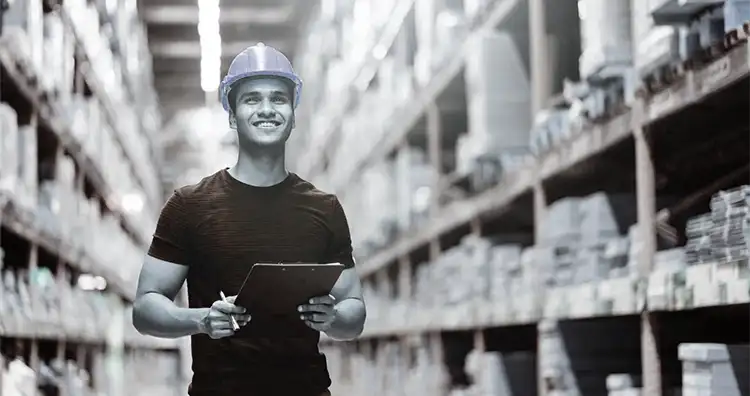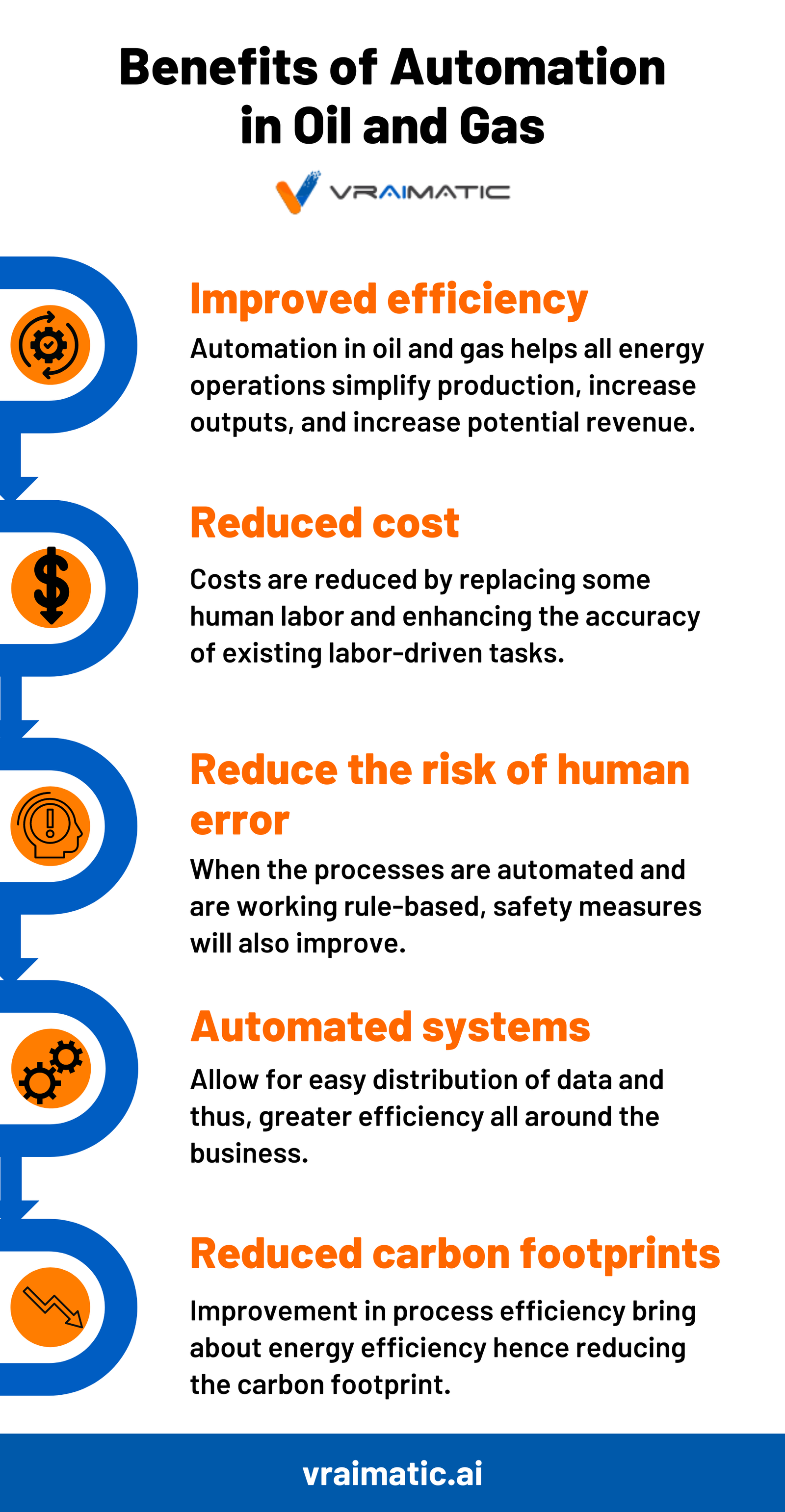
Inventory management is a crucial aspect of any business, and with the advancements in technology, the potential for improvement has skyrocketed. In particular, the combination of artificial intelligence (AI) and robotic process automation (RPA) has opened up new doors in inventory management. These technologies have the power to revolutionize the way businesses handle their inventory, streamlining processes, reducing costs, and increasing efficiency. Let’s dive into the exciting world of AI and RPA in inventory management and explore the possibilities they bring.
AI, with its ability to analyze vast amounts of data and make intelligent decisions, can provide valuable insights into inventory management. It can predict demand patterns, identify trends, and optimize stock levels to ensure that businesses always have the right amount of inventory at the right time. Additionally, AI-powered algorithms can detect anomalies and potential issues, allowing businesses to proactively address them and minimize disruptions. On the other hand, RPA automates repetitive tasks, such as data entry and order processing, freeing up valuable time for employees to focus on more strategic activities. By combining AI and RPA, businesses can create a powerful ecosystem that not only enhances inventory management but also drives overall business growth.
The potential of AI and RPA in inventory management is immense. From improving forecasting accuracy to reducing stockouts and optimizing supply chain operations, these technologies offer a host of benefits. In this article, we will explore the various ways AI and RPA can transform inventory management and provide practical insights for businesses looking to leverage their potential. So, buckle up and get ready to discover the exciting world where technology meets inventory management!
The Potential of AI and RPA in Inventory Management
AI and RPA (Robotic Process Automation) have revolutionized the way businesses manage their inventory. By leveraging AI algorithms and RPA technologies, companies can streamline their inventory management processes, reduce human errors, and enhance overall efficiency. AI can analyze large sets of data to predict demand patterns, optimize stock levels, and automate replenishment. RPA can automate repetitive tasks such as stock tracking, order processing, and inventory reconciliation. Together, AI and RPA provide businesses with the potential to achieve real-time visibility, accurate forecasting, and proactive inventory management.

The Potential of AI and RPA in Inventory Management
The integration of artificial intelligence (AI) and robotic process automation (RPA) has revolutionized various industries, including inventory management. AI has the capability to analyze vast amounts of data and make accurate predictions, while RPA automates repetitive tasks, resulting in increased efficiency and reduced costs. In this article, we will explore the potential of AI and RPA in inventory management and how businesses can benefit from their implementation.
Streamlining Inventory Processes
AI and RPA have the potential to streamline inventory processes by automating various tasks. For example, AI-powered algorithms can analyze historical sales data, market trends, and customer behavior to predict future demand accurately. This enables businesses to optimize their inventory levels, ensuring that they have the right products in stock at the right time. RPA can then automate the process of generating purchase orders and replenishing inventory, eliminating the need for manual intervention and reducing the risk of human error.
Moreover, AI and RPA can automate the process of tracking inventory across multiple locations or warehouses. By leveraging computer vision and machine learning, AI can identify and count items in real-time, ensuring accurate inventory records. RPA can then update these records automatically, reducing the need for manual data entry and minimizing discrepancies. This improved accuracy and efficiency help businesses maintain optimal inventory levels and reduce the cost associated with overstocking or stockouts.
Benefits of AI and RPA in Inventory Management
Implementing AI and RPA in inventory management offers several benefits for businesses. Firstly, it improves inventory accuracy by automating data entry and reducing the risk of human error. This leads to better visibility and control over inventory levels, enabling businesses to make informed decisions. Secondly, AI and RPA increase operational efficiency by automating repetitive tasks, allowing employees to focus on more strategic activities. This not only saves time but also reduces labor costs.
Furthermore, AI and RPA enable businesses to optimize their supply chain by accurately predicting demand and aligning inventory levels accordingly. This reduces the risk of overstocking or stockouts, improving customer satisfaction and minimizing financial losses. Additionally, AI and RPA can help businesses identify patterns and trends in inventory data, providing valuable insights for better decision-making and inventory planning. This proactive approach to inventory management helps businesses stay competitive in a rapidly changing market.
In conclusion, the potential of AI and RPA in inventory management is vast. From streamlining inventory processes to improving accuracy and efficiency, businesses can benefit greatly from their implementation. By harnessing the power of AI and RPA, businesses can optimize their inventory levels, reduce costs, and make informed decisions. As technology continues to advance, AI and RPA will play an increasingly important role in shaping the future of inventory management.
The Potential of AI and RPA in Inventory Management
- AI and RPA can automate inventory tracking, reducing human errors and improving accuracy.
- These technologies can analyze historical data to predict demand and optimize inventory levels.
- AI and RPA can streamline order processing, ensuring timely fulfillment and reducing backlogs.
- By automating routine tasks, AI and RPA free up time for employees to focus on strategic inventory management decisions.
- Implementing AI and RPA in inventory management can result in cost savings and improved customer satisfaction.

Frequently Asked Questions
What is the role of AI in inventory management?
Artificial Intelligence (AI) has revolutionized the field of inventory management by offering advanced capabilities to optimize and automate various processes. AI algorithms can analyze large volumes of data, detect patterns, and make accurate predictions about demand, supply, and stock levels. This enables businesses to make informed decisions, reduce costs, and improve overall efficiency in inventory management.
AI can also enhance demand forecasting by considering various factors such as historical sales data, market trends, and external influences. By accurately predicting demand, businesses can optimize inventory levels, avoid stockouts, and minimize excess stock. AI-powered systems can also automate inventory replenishment processes, ensuring timely ordering and reducing the risk of stockouts or overstocking.
How can AI improve inventory accuracy?
AI can significantly improve inventory accuracy by enabling real-time tracking and monitoring of inventory levels. With the help of sensors, RFID tags, and barcode scanners, AI-powered systems can capture data on inventory movements and update the inventory records automatically. This eliminates the need for manual counting and reduces the chances of errors or discrepancies in inventory records.
Furthermore, AI algorithms can analyze historical data, sales trends, and other relevant factors to identify potential stock discrepancies and discrepancies. By flagging such issues, AI systems can help businesses take corrective actions promptly, ensuring accurate inventory records and minimizing the risk of stockouts or excess stock.
What are the benefits of implementing RPA in inventory management?
Robotic Process Automation (RPA) offers several benefits when applied to inventory management processes. One of the key advantages is increased efficiency. RPA can automate repetitive and time-consuming tasks such as data entry, inventory tracking, and order processing. This not only saves time but also reduces the risk of human errors, leading to improved accuracy in inventory management.
RPA can also enhance inventory visibility by integrating with various systems and consolidating data from multiple sources. This provides real-time insights into inventory levels, demand, and supply, enabling businesses to make data-driven decisions and optimize their inventory management strategies. Additionally, RPA can streamline inventory reconciliation processes, ensuring accurate and up-to-date inventory records.
Can AI and RPA work together in inventory management?
Absolutely! AI and RPA can complement each other in inventory management to achieve even greater efficiency and accuracy. AI algorithms can analyze vast amounts of data and provide insights, while RPA can automate the execution of tasks based on those insights. For example, AI can predict demand patterns, and RPA can automatically generate purchase orders or adjust inventory levels accordingly.
By combining AI and RPA, businesses can create intelligent systems that can learn from data, make predictions, and take actions autonomously. This synergy between AI and RPA can lead to more streamlined and optimized inventory management processes, reducing costs, minimizing stockouts, and improving overall operational efficiency.

What are the potential challenges of implementing AI and RPA in inventory management?
While AI and RPA offer numerous benefits in inventory management, there are also some potential challenges to consider. One challenge is the initial investment required for implementing AI and RPA technologies. Businesses need to invest in the right hardware, software, and expertise to ensure successful deployment.
Another challenge is data quality and integration. AI and RPA rely on accurate and up-to-date data from various sources. Ensuring data integrity, consistency, and compatibility can be a complex task, especially when dealing with legacy systems or multiple data sources.
Furthermore, there may be resistance from employees who fear job displacement due to automation. It is crucial for businesses to communicate the benefits of AI and RPA and involve employees in the implementation process to alleviate concerns and foster a collaborative work environment.
Lastly, maintaining and updating AI and RPA systems requires ongoing monitoring and maintenance, as well as staying up-to-date with advancements in technology. Regular training and upskilling of employees may be necessary to fully leverage the potential of AI and RPA in inventory management.

Final Summary: The Untapped Potential of AI and RPA in Inventory Management
In this fast-paced world of business, staying ahead of the competition is crucial. That’s where the power of Artificial Intelligence (AI) and Robotic Process Automation (RPA) comes into play. We have explored how these cutting-edge technologies can revolutionize inventory management, and the possibilities are truly astounding.
By harnessing the potential of AI and RPA in inventory management, businesses can gain valuable insights, improve efficiency, and enhance customer satisfaction. AI-powered algorithms can analyze vast amounts of data, enabling businesses to make informed decisions about inventory levels, demand forecasting, and supply chain optimization. RPA, on the other hand, can automate repetitive tasks like order processing and inventory tracking, freeing up valuable time and resources for more strategic initiatives.
Imagine a world where businesses can accurately predict demand, optimize inventory levels, and automate mundane tasks with ease. The potential is immense, and it’s time for businesses to embrace these technologies and unlock their full benefits. With AI and RPA, inventory management can become a streamlined and efficient process, allowing businesses to focus on growth and innovation.
So, don’t wait any longer. Embrace the power of AI and RPA in inventory management and take your business to new heights. The future is here, and it’s time to seize the opportunities that these technologies offer. Stay ahead of the competition, optimize your inventory, and watch your business thrive in this dynamic digital age. The potential is limitless, and the time to act is now.